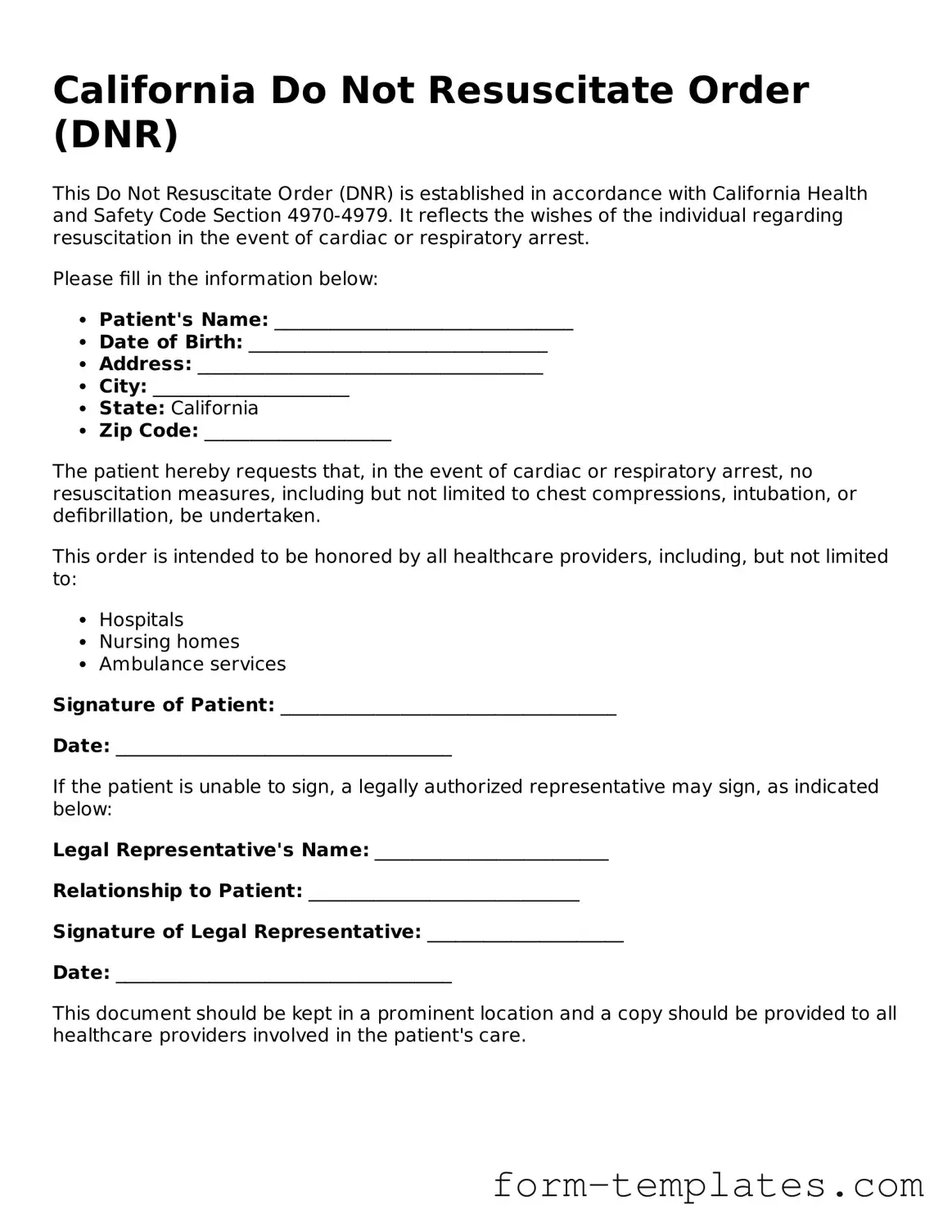California Do Not Resuscitate Order (DNR)
This Do Not Resuscitate Order (DNR) is established in accordance with California Health and Safety Code Section 4970-4979. It reflects the wishes of the individual regarding resuscitation in the event of cardiac or respiratory arrest.
Please fill in the information below:
- Patient's Name: ________________________________
- Date of Birth: ________________________________
- Address: _____________________________________
- City: _____________________
- State: California
- Zip Code: ____________________
The patient hereby requests that, in the event of cardiac or respiratory arrest, no resuscitation measures, including but not limited to chest compressions, intubation, or defibrillation, be undertaken.
This order is intended to be honored by all healthcare providers, including, but not limited to:
- Hospitals
- Nursing homes
- Ambulance services
Signature of Patient: ____________________________________
Date: ____________________________________
If the patient is unable to sign, a legally authorized representative may sign, as indicated below:
Legal Representative's Name: _________________________
Relationship to Patient: _____________________________
Signature of Legal Representative: _____________________
Date: ____________________________________
This document should be kept in a prominent location and a copy should be provided to all healthcare providers involved in the patient's care.
